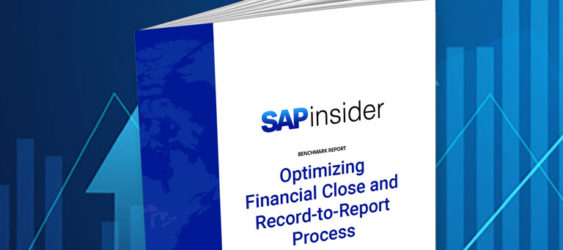Achieve a Smooth Financial Transformation Through Intelligent Automation
SAP Solution Extensions Deliver Hyper Efficiency and Faster Decisions to Finance and Procurement
Many SAP customers struggle with keeping consistency in their financial reporting process, especially when making a big transformation, such as a move to SAP S/4HANA. As organizations strive to drive business performance with purpose, and to become more agile and intelligent, they need to consider how to disrupt business models, how to make the most of their resources, and how to confidently accelerate decisions. While this applies across all lines of business, this is especially important for managers in finance and procurement.
CFOs are being asked to enable innovation, but they can’t do that when their finance and accounting teams are bogged down in repetitive and time-consuming tasks. They need to achieve hyper efficiency by automating every part of the financial close process with built-in intelligence. Intelligent workflows help accounting and finance focus on high-risk areas and support ongoing business strategies and policies. One mistake on closing a company’s books can cause serious damage. That is why SAP recommends using SAP Account Reconciliation and Automation by BlackLine and SAP Intercompany Financial Hub by BlackLine. Using these applications to close the books and consolidate financials is an innovative approach some customers have used to build a bridge to SAP S/4HANA, making the move a smooth one on the financials front while also gaining significant operational benefit and providing a nice ROI to the staff.
With SAP Account Reconciliation and Automation and SAP Intercompany Financial Hub, you can reduce the cost and effort of closing while freeing time for analysis and strategy, improving closing accuracy, and reducing risk. You can handle data from different sources and multiple instances of ERP applications and other software. BlackLine technology automates the closing process and shortens that cycle down from weeks or days to hours while providing the kind of continuity corporate auditors find reassuring. Customers want automation in routine processes, and SAP Account Reconciliation and Automation delivers that capability in a way a business user can take advantage of without a big investment in training or heavy support from IT.
Adopting new, digitized approaches for accounts payable also yields efficiency. Making the change from manual processing to a robotic process automation system enables an intelligent enterprise to accelerate invoice handling, meet payment deadlines and compliance requirements, and avoid risks and expenses related to inaccurate information. Automated processing based on business rules can replace traditional, multi-step, manual activities and guide the process to a timely, accurate conclusion with minimal human intervention. With SAP Invoice Management by OpenText, you can take advantage of early payment discounts for bottom-line results while empowering procurement to negotiate further incentives.
Speed Decision Making with Data Intelligence
Across all lines of business, the data generated by applications and “things” continues to get more complex and proliferate more quickly across systems and sources while data architectures and IT platforms evolve. As a result, the challenges — and opportunities — of analyzing and understanding the significance and context of large amounts of decentralized, disparate data also increase. From a competitive standpoint, it’s essential to be able to power growth and innovation with data intelligence.
Built to work with streaming data, big data, the SAP HANA database, and a range of sources and platforms, SAP Data Visualization by Zoomdata lets you analyze and contextualize billions of rows of quantitative and qualitative information. The on-demand cloud application provides real-time data visualization and analysis to empower decision makers across your intelligent enterprise. It scales to meet your requirements, without the need to support software and infrastructure, and connects with both cloud and on-premise data.








